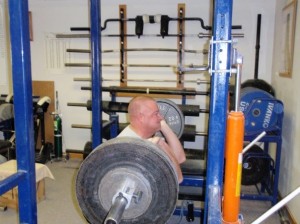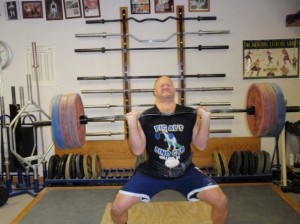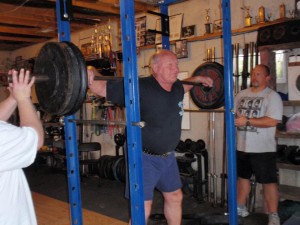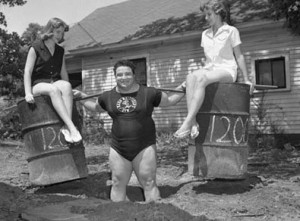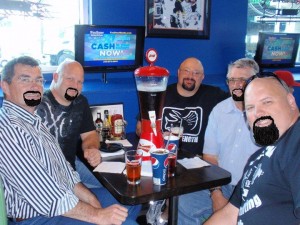Ramblin’
by Al Myers
One of my favorite sections of Bill Clark’s old Strength Journals was his “Ramblin” commentaries. These often went “on and on” about any significant or insignificant activity within the USAWA, or just his general viewpoints regarding an issue pertinent at the time. So pretty much, Bill just rambled on about anything and everything, thus the name of the section – Rambin’. Well, I’m no Bill Clark, but I got several things to announce or comment on today so I will be Ramblin’ a bit myself.
First of all, I want to wish Jarrod Fobes the best of luck for his meet in Denver, Colorado on Saturday. The meet is named “The Welcome Mat Meet” and will be Jarrod’s first promotion within the USAWA. I really wanted to be there, and made plans to do so, but a family issue has interfered with my travel plans so I will be staying home dealing with that instead. I believe this will be the FIRST EVER USAWA meet or event sanctioned in the State of Colorado. I will need to do some checking to see for sure, but I don’t ever remember a meet in Colorado. (If any of you “oldtimers” remember one please let me know.) Of course, the most famous Colorado USAWA lifter is Rex Monahan. Rex was a mainstay in major competitions for many years. There is rarely a major meet where the conversation doesn’t turn to Rex, and a story or two is told in his remembrance. But I don’t think Rex ever put on a USAWA meet in Colorado???? I can’t forget mentioning the Backbreaker this weekend as well. This meet has been a mainstay at Clarks Gym for many years, and emphasizes all the heavy lifts – the Back, Hip, H&T, Neck, and Harness. If you get a chance to make this meet on Sunday – DO IT! More than likely you will get to meet up with the Heavy Lift PHENOMS Steve Schmidt and Joe Garcia, and they will very nicely give you the BEAT DOWN!
Before I forget, I want to congratulate Jarrod for passing his USAWA officials test. His name is now added to the list of Certified USAWA Officials. This list is getting “longer and longer” and the USAWA Officials Program is growing. I am glad we n0w have an Officials Program in the USAWA, after going many years without one. I know the critics will always say that “passing a test doesn’t make a good official”, and I’m not going to argue that point. But passing a test does do TWO THINGS that we didn’t have before: number 1, insures that an official has at least looked at the USAWA Rulebook once in their life, and point number 2, shows that the official at least cares enough to put a little time into taking the test to become certified. I don’t think we are asking too much!!! Plus, every year I know we will do things to “strengthen” the officials program. Last year at the National Meeting it was passed that an USAWA Official must also be a current member of the USAWA to be active. Again, that is NOT TO MUCH TO ASK, but it is a small step forward.
BTW – the USAWA Online Store is making sales! I just sent out a big order yesterday to Jim Malloy. Thanks Jim for your order! Jim has been a HUGE SUPPORTER of the USAWA for many, many years. He always keeps his membership up to date and has supported practically every thing the USAWA has done. Before I know it I will need to be ordering more merchandise. Also, our inventory stock is very limited and it is VERY LIKELY that certain sizes of shirts will be sold out before I restock. I will list this on the store item blog site as it happens. PLEASE CHECK THIS before ordering items that may be out of stock. Also, if anyone has ideas for other online store items just let me know and I’ll consider it (unless someone wants something silly, like say, USAWA labeled beer!).
The IAWA World Championships in Perth, Australia is getting closer! It looks like the USAWA will have a good representation of competitors present. Besides myself and Chad Ullom, I know that Denny Habecker, Art Montini, and Dennis & Flossy Mitchell will be making the trip. I don’t know of any other USAWA lifters that are going, and if you are, please let me know. Come to think of it – this is the SAME GROUP that made it to the IAWA Championships in Glasgow last year! Best of luck to all competitors and safe travels.
I better call it quits before this gets too long. After all, Bill usually kept his “ramblins” to only a page in the ole Journal!
